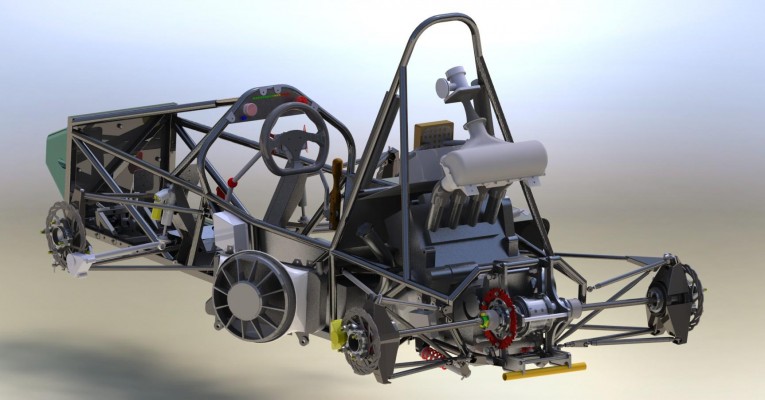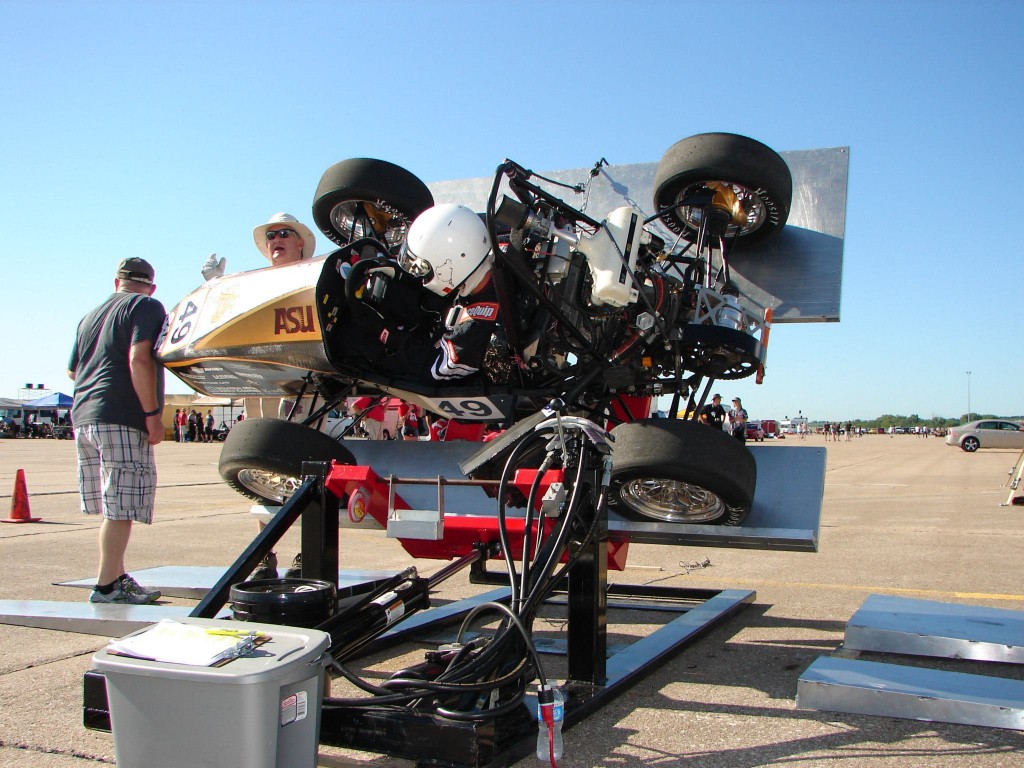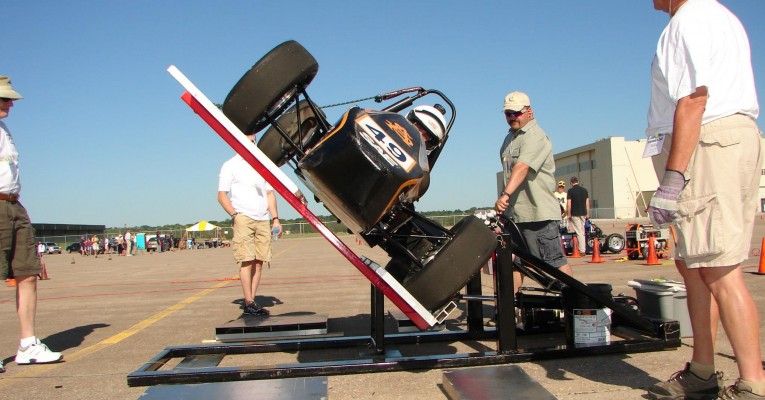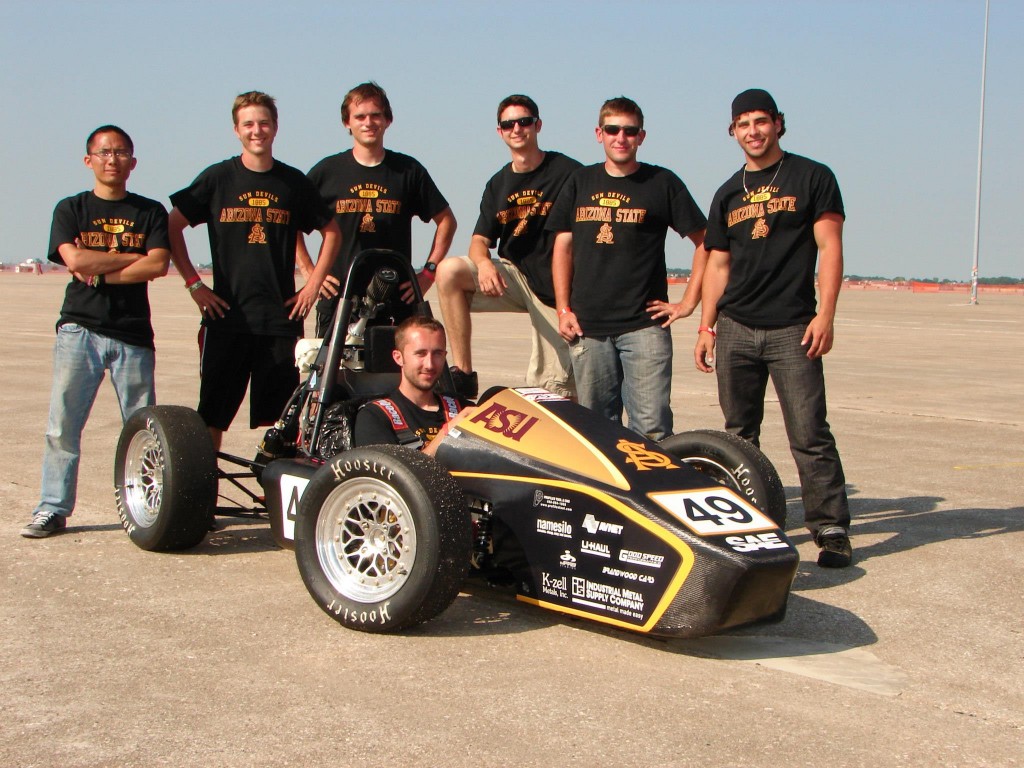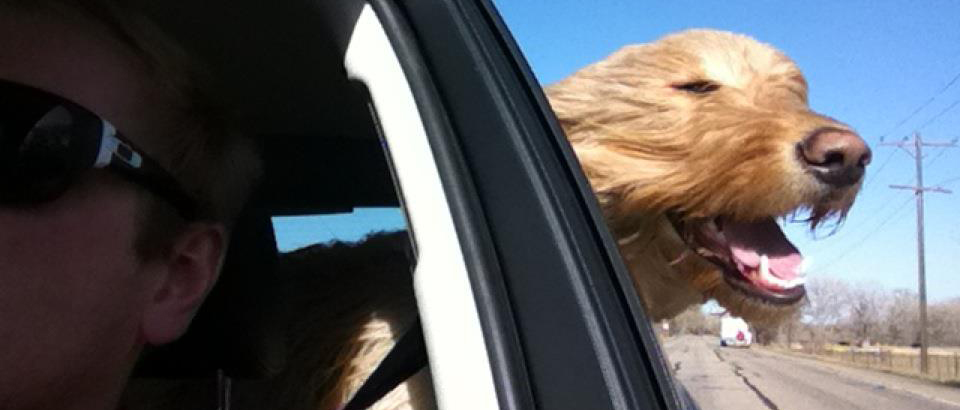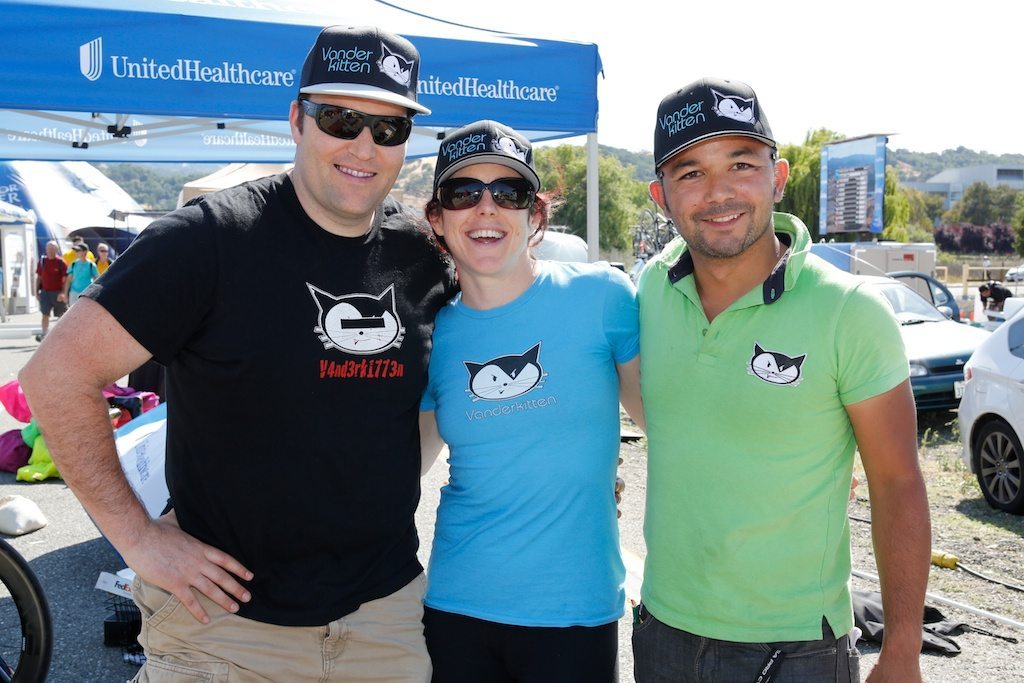When Valentin and I moved down to Arizona, through an introduction by Bill Caswell, we had an opportunity to get together with Arizona State University’s Formula SAE team. I had been intrigued with the SAE program since my karting days, when I would watch Colorado State’s team test at our local autocross events, and Valentin had been interested since his college days.
The concept behind Formula SAE is that a fictional manufacturing company has contracted a design team to develop a small Formula-style race car. The prototype race car is to be evaluated for its potential as a production item. The target marketing group for the race car is the non-professional weekend autocross racer. Each student team designs, builds and tests a prototype based on a series of rules whose purpose is both to ensure onsite event operations and promote clever problem solving.
Despite the changing times, the Sun Devil Formula SAE team continues to have a strong influence on the racing community. Being one of the most demanding organizations, all of the participating Formula SAE engineers have proven time and time again that this program is the best at providing hands on experience that will be most valuable in the career world after graduation.
At ASU, the SAE program goes back to the very beginning, from the first F-SAE cars, to full carbon monocoque, to today’s space frame designs, the ASU program has influenced some of the best engineers to set foot on the campus.
ASU’s Formula SAE team has been working hard to prepare for competition that is just about a month away. The team has spent their last week desperately trying to finish the Cost Report and making final preparations on the car before testing. Many of us can relate to the insanity of the final stretch of car prep before a big race… but despite it all the leader of the team, Weston Bertrand, took some time to share some more information about the program.
SI: What is your major and date of expected graduation?
WB: Mechanical engineering with a focus in energy. I’ll be graduating Spring of 2014.
SI: When did you begin working with the FSAE team at ASU?
WB: I joined the team in the fall of 2011, but I didn’t start getting really involved until March of last year.
SI: When did you first learn about Formula SAE and what attracted you to the program?
WB: I first learned about it my freshman year, the club definitely caught my eye because students like me were able to end up with such a cool final product.
SI: What’s the most valuable thing that being a part of the team has given you?
WB: It has definitely taken away my fear of being wrong. When I started working with the team, I was afraid to give my two cents since I was around a bunch of people who looked like they had a handle on things, but after a while I just kind of jumped in. I’ve learned so much from the experience and glad I had some people to help me learn enough to significantly contribute to the team.
SI: Why would you encourage incoming freshman to join to FSAE team at ASU?
WB: It is the best engineering learning experience I’ve ever had. In the classroom students learn how to quantify various characteristics that engineers find useful, but actually working on a project this complex has taught me how things should go together and what I should be asking along the way.
SI: What different teams are working within the ASU FSAE team?
This semester we have the team broken down into seven project teams, Vehicle Dynamics, Drivetrain, Engine, Aerodynamics, Data Acquisition, Brakes, and Marketing. Each team has their own objectives and deliverables that end up contributing to the finished car.
SI: How did the team do at competition last year?
WB: We placed 24th of 80 teams that registered, which is pretty good for a rookie team.
SI: What will be different in 2013 than in 2012?
WB: We have been working on a bunch of upgrades for this year’s car. There’s been a complete overhaul of the drivetrain system, we’re expecting to have a pneumatic shifter set up, we’ve improved the cooling system, and we’ve had a group of seniors working on implementing carbon fiber suspension components. So, it’s certainly looking like a faster car this year.
SI: What do you feel is the main differentiator between Arizona States’ FSAE team, and other FSAE teams?
WB: I think dedication is the main thing that sets us apart. There are a lot of FSAE teams out there that have significant school support and a small army of engineering students that are held academically accountable for their work. Our team/school isn’t set up that way for us; we have to fight just to have a show to work in on campus. The trend has been that a highly dedicated core of a few students come together and give it everything just because of their passion for the project, and these are the students that really deliver.
SI: Competition is about a month away – what is the primary focus of the team right now?
WB: Making sure everything is up to snuff. We are still doing some fabrication, but we’re hoping to have the car out on the track testing within the next couple weeks. We still have a plenty of work to do.
SI: If you and the team were given a $10,000 cash sponsorship, what would be the first thing you would buy?
WB: 4 Öhlins TTX25 MkII racing shocks. Plenty of people on the team have drooled over these, but they’ve always been out of our price range.
SI: What has been the hardest part about preparing for competition this year?
WB: Making sure everything we want to accomplish is getting done. It’s difficult to anticipate who is going to stick around for the critical times and who isn’t, so it’s been hard making sure that if someone stops performing that there is someone else to pick up the slack.
SI: Who is currently supporting the FSAE team at ASU?
WB: We have a small group of awesome sponsors: Industrial Metal Supply, Silverthin Bearings, UHAUL, Chris McMurry, Bondurant School of High Performance Driving, and Fingers Crossed Racing to name a few. We unfortunately don’t get too much support from the school so we are so grateful to our sponsors who let us keep the lights on and the engine running.
SI: What can others do to support the team?
WB: We’re always looking for support whether it be full corporate sponsorship or just a private donation or even loaning out a trailer. The more help we get the faster we can go!
SI: How can we follow the team’s success at competition?
WB: We’ll be updating our Facebook page throughout the trip with updates of how it’s going. In the meantime, people can also visit our website (www.sundevilracing.com) to learn more about our team.

